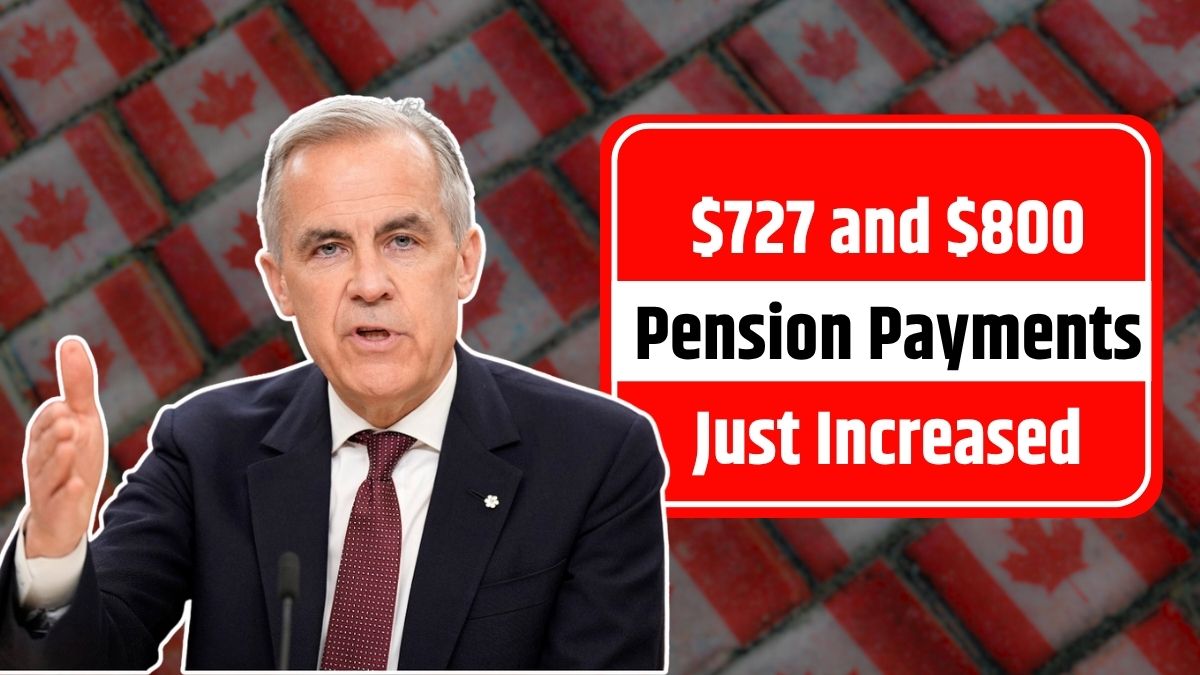Canada’s Old Age Security (OAS) program has been a cornerstone of retirement income for millions of seniors, and starting August 2025, it’s getting a significant boost. The government has officially confirmed a new monthly pension rate of $727 and $800, depending on your age group. This increase is designed to protect older Canadians from rising inflation and provide them with the financial stability they deserve in retirement.
If you or a loved one is 65 or older, this change will likely affect you. Here’s a complete breakdown of what’s changing, who qualifies, and how to ensure you receive your payment on time.
What’s Changing in the OAS Pension This August?
As of August 2025, monthly OAS benefits are increasing to $727 for seniors aged 65–74, and $800 for those aged 75 and older. This adjustment is based on the government’s annual review of the Consumer Price Index (CPI), which reflects the cost of essential goods and services like food, rent, and medicine.
The purpose of this change is clear: to help seniors manage the rising cost of living and reduce financial stress in later life.
Why OAS and CPP Are Not the Same
Many people confuse Old Age Security (OAS) with the Canada Pension Plan (CPP), but they are very different programs:
- CPP is a contribution-based pension. You must have worked and paid into it to receive benefits. The more you contribute during your working years, the more you receive.
- OAS, on the other hand, is not based on employment. Even if you never worked, you can still qualify based on age, residency, and income.
This makes OAS especially valuable for those who stayed at home, worked part-time, or had non-traditional career paths.
Four Key Components of the OAS Program
To better understand how the system works, here’s a look at the four main parts of the OAS program:
- Base OAS Pension
- The standard monthly payment for eligible seniors aged 65 and older.
- Guaranteed Income Supplement (GIS)
- Additional support for seniors with low or no income, often received alongside the base pension.
- Allowance
- A benefit for individuals aged 60 to 64 whose spouse or partner receives OAS and GIS.
- Allowance for the Survivor
- Targeted at widows or widowers aged 60 to 64, offering financial support until they become eligible for full OAS.
These components work together to provide a comprehensive safety net for older Canadians.
Why the OAS Pension Increased in August 2025
The increase is part of the federal government’s quarterly review process, where it adjusts OAS based on inflation trends using the Consumer Price Index (CPI).
The latest CPI data showed a steady rise in the cost of:
- Groceries
- Electricity and heating
- Prescription medication
- Housing and rent
As a result, the government determined that an increase in pension was necessary to maintain seniors’ purchasing power and prevent financial insecurity.
New OAS Payment Amounts by Age Group
Here’s how the new rates break down:
| Age Group | New Monthly Payment | Reason for Increase |
|---|---|---|
| Ages 65 to 74 | $727 | CPI-based inflation adjustment |
| Age 75 and above | $800 | CPI + 10% top-up for older seniors with higher expenses |
The 10% top-up for those aged 75 and above reflects the reality that older seniors tend to face more medical costs and support needs.
Eligibility Criteria for $727 and $800 OAS Benefits
To receive the increased benefit, you must meet the following eligibility requirements:
- Minimum Age
- You must be at least 65 years old by August 30, 2025
- Citizenship or Residency
- You must be a Canadian citizen or permanent resident
- Residency Duration
- You must have lived in Canada for at least 10 years after age 18
- Higher Amount at Age 75
- To receive $800, you must be 75 or older by the end of August 2025
- Income Limit (Clawback Rule)
- If your net annual income is over $90,997, your OAS may be partially or fully reduced
This ensures that support goes to those who need it most, while gradually phasing out benefits for higher-income individuals.
Payment Date: When Will You Receive the New OAS Amount?
The next OAS payment reflecting the increased rate will be issued on:
Monday, August 26, 2025
If you already receive OAS, you don’t need to reapply. The updated amount will be automatically deposited into your registered bank account or sent via cheque if you’ve opted for mail delivery.
How to Ensure You Get Paid on Time
Here are a few simple steps to avoid payment delays:
- Keep your bank account and mailing information up to date in your CRA and Service Canada accounts
- Log into the OAS portal to check for any errors or pending issues with your profile
- If payment does not arrive by early September, contact OAS support directly
What the CPI Tells Us About the Need for Higher OAS Payments
The Consumer Price Index (CPI) is the main tool used to adjust pensions like OAS. Recent CPI findings show:
- A notable increase in rent and housing costs across major provinces
- Medical inflation affecting prescriptions and health services for older adults
- Higher prices for essential food items like bread, milk, eggs, and produce
The government’s response—a $727 and $800 increase in monthly OAS—is meant to ensure seniors are not left behind amid these rising expenses.
What If You’re Not Yet Receiving OAS?
If you’re turning 65 soon, make sure to apply at least six months before your 65th birthday. You can apply through:
- Service Canada online
- By mail using a printed application
- In-person at a Service Canada Centre
Early application ensures you won’t miss the first eligible payment window.
The Clawback Rule: What High-Income Seniors Need to Know
If your annual income exceeds $90,997, your OAS may be reduced through a recovery tax. This is commonly known as the OAS Clawback.
While it doesn’t affect most seniors, those with:
- Large pensions
- High investment income
- Business or rental income
…should consult a tax advisor to plan around the clawback threshold.
What This Means for You or Your Family
If you or someone in your family is 65 or older, this increase provides:
- Greater monthly cash flow
- Protection from rising prices
- Peace of mind knowing your retirement income is growing with inflation
And for those 75+, the additional 10% top-up shows that the government is aware of the extra health and support costs faced by older seniors.









